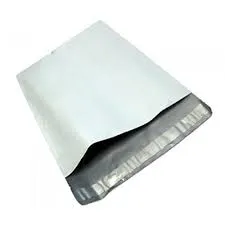hay wrap film
The Importance of Hay Wrap Film in Modern Agriculture
In the realm of agriculture, innovation plays a crucial role in enhancing productivity and efficiency. One of the notable advancements that have gained significant attention in recent years is hay wrap film. This agricultural product has revolutionized the way farmers store and preserve hay, ensuring that livestock has access to high-quality feed throughout the year. In this article, we will explore the benefits, types, and best practices associated with hay wrap film, and how it contributes to sustainable farming.
The Benefits of Hay Wrap Film
Hay wrap film offers numerous advantages when compared to traditional hay storage methods. Firstly, it provides excellent protection against environmental factors. Hay can easily be damaged by rain, moisture, and UV rays, leading to spoilage and nutrient loss. However, when wrapped in film, hay is safeguarded against these elements, maintaining its nutritional value and preventing mold growth.
Secondly, hay wrap film promotes a longer shelf life for stored hay. Properly wrapped bales can remain viable for up to a year or more, depending on the type of forage and storage conditions. This is particularly beneficial for farmers who need to stockpile feed for the off-season or during periods of drought when pasture growth is limited.
Moreover, hay wrap film is lightweight and easy to handle, which simplifies the wrapping and storage process
. Farmers can quickly wrap bales on-site, minimizing labor costs and maximizing productivity. Additionally, using wrap film reduces the amount of space required for storage compared to traditional methods, allowing for more efficient use of barn space or outdoor storage areas.Types of Hay Wrap Film
There are primarily two types of hay wrap film commonly used in the agricultural sector stretch film and silage film. Stretch film is typically used for wrapping dry hay, while silage film is designed for wrapped bales that will undergo fermentation. Each type of film offers unique properties that cater to different storage needs.
hay wrap film

Stretch film is characterized by its elasticity and strength, which allow it to conform tightly to the shape of the bale. This tight seal not only enhances moisture resistance but also minimizes air infiltration, reducing the risk of spoilage. On the other hand, silage film is often thicker and designed to withstand the fermentation process while ensuring that the wrapped material remains airtight. The choice of film depends on the specific requirements of the hay and the desired storage conditions.
Best Practices for Using Hay Wrap Film
To maximize the benefits of hay wrap film, farmers should adhere to certain best practices. Firstly, it is crucial to ensure that the hay is at the correct moisture content before wrapping. Ideally, hay should be between 40-60% moisture to ferment properly and avoid spoilage. If hay is too dry, it may not ferment adequately, while hay that is too wet can lead to spoilage and loss of nutrients.
Secondly, proper wrapping techniques are vital. It is recommended to overlap the film by at least 50% with each layer to create a secure seal. Additionally, wrapping should be done continuously without breaks to minimize air pockets, which can compromise the quality of the hay.
Finally, the storage location should be carefully considered. Wrapped bales should be placed in a shaded area or under cover to protect them from direct sunlight and extreme weather conditions. This further enhances the longevity of the stored hay and preserves its quality.
Conclusion
In conclusion, hay wrap film represents a significant advancement in agricultural practices, providing farmers with an effective solution for hay storage and preservation. With its numerous benefits, such as protection against environmental factors, extended shelf life, and ease of use, it has become an indispensable tool in modern farming. By adopting best practices and selecting the appropriate type of film, farmers can ensure their livestock is well-fed, even in challenging conditions. As the agricultural sector continues to evolve, hay wrap film remains pivotal in promoting sustainability and efficiency in hay production.
-
The Best Uses for Small Trash Bags in Daily LifeNewsJul.01,2025
-
Stylish Reusable Grocery Bags TrendsNewsJul.01,2025
-
Shipping Advantages of Using Bubble Envelopes BulkNewsJul.01,2025
-
How Compostable Mailing Bags Reduce Environmental ImpactNewsJul.01,2025
-
Environmentally - Friendly Bulk Poly MailersNewsJul.01,2025
-
Eco Friendly Custom Laminated Tote BagsNewsJul.01,2025
-
Have the freedom of customizing your custom mailers any way you want! Our dedicated packaging support will help deliver you the mailing experience you need to elevate your shipping experience to the next level! Start making a strong impression on your customers and stand out from your competitors! -
LIYA uses high quality raw materials which directly purchased from large enterprises domestic and overseas such as PetroChina, Sinopec, Sabic, Equate, ExxonMobil, Dow Chemical, Total, and Borouge, ensuring the price advantage and quality of the raw materials. -
LIYA uses high quality raw materials which directly purchased from large enterprises domestic and overseas such as PetroChina, Sinopec, Sabic, Equate, ExxonMobil, Dow Chemical, Total, and Borouge, ensuring the price advantage and quality of the raw materials.





